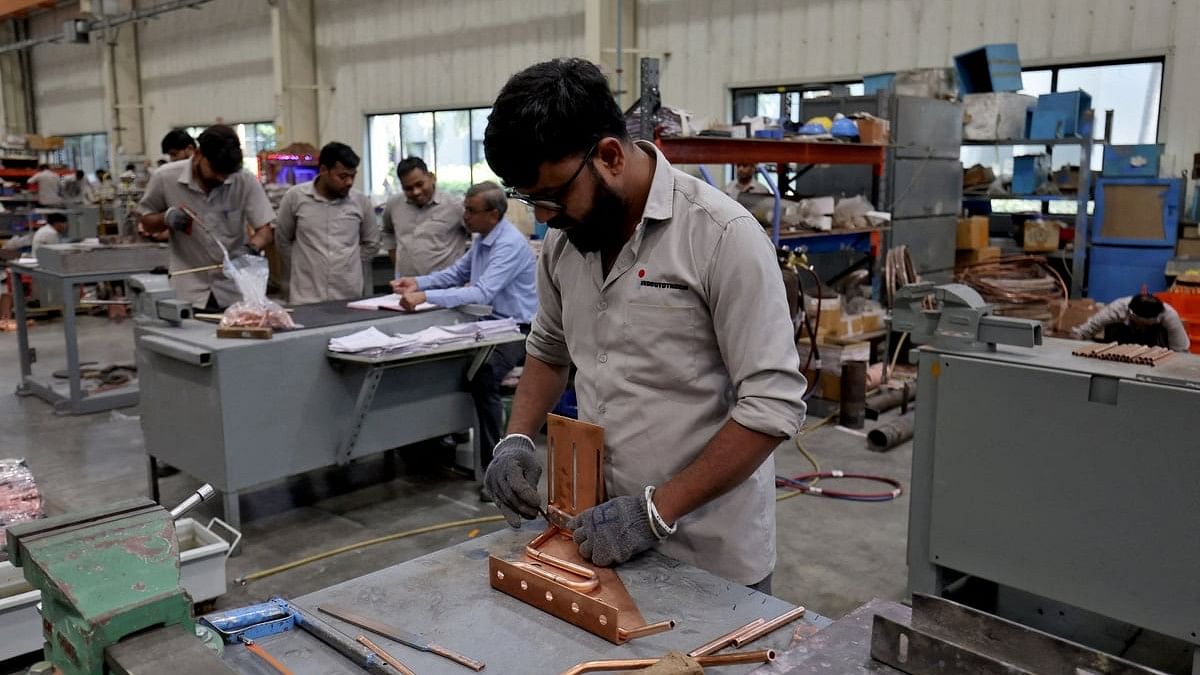
File Photo: Employees assemble an electric transformer inside a manufacturing unit of Inductotherm (India) Private Limited at Sanand GIDC (Gujarat Industrial Development Corporation), on the outskirts of Ahmedabad.
Reuters Photo
New Delhi: India’s manufacturing sector growth declined to three months low in May due to softer rise in new orders and output as lower working hours due to heatwaves affected production volumes, as per an industry survey report released by S&P Global on Monday.
Purchasing Managers’ Index (PMI) for manufacturing declined 57.5 in May from 58.8 recorded in the previous month. In March it was recorded at 59.1. The PMI print above 50 indicates growth in the sector while below 50 shows contraction. May PMI data signal a “slower but still substantial improvement in the health of the sector,” S&P Global noted in its monthly report.
The survey report showed that the working hours in the companies during the month under review was reduced due to heatwaves. The reduced working hours hampered production volumes.
Large parts of the country witnessed severe heatwaves and record-breaking high temperatures during the month of May. In some parts of the country the maximum temperature soared to 50 degree Celsius.
“Panellists cited heatwaves as a reason for lower work hours in May, which may have affected production volumes,” said Maitreyi Das, Global Economist at HSBC.
The pace of increase in new orders was the slowest in three months. The growth in new orders was stymied by competition and election-related disruptions.
“Despite easing to a three-month low, the rate of increase remained sharp. Growth was supported by new business gains, demand strength and successful marketing efforts, anecdotal evidence showed. The slowdown was attributed to reduced working hours amid intensive heat and rising production costs,” the report noted.
However, there was a robust growth in new export orders. It rose at the fastest pace in over 13 years, leading to broad-based demand across geography. The PMI data is based on a survey of around 400 manufacturers spread across the country.
The surveyed manufacturers expressed the highest level of positive sentiment towards growth prospects in nearly nine-and-a-half years. Confidence was fuelled by advertising and innovation, alongside expectations that economic and demand conditions will remain favourable.
Pick-up in business confidence boosted job creation. “The positive news is that May recorded the highest level of positive sentiment among manufacturing firms in just under a decade, resulting in increased job creation,” said Das.
On the price front, higher raw material and freight costs led to a rise in input prices. The overall rate of inflation in the sector rose to the highest level since August 2022. In response to the latest increase in operating expenses companies raised their own selling prices in May. The rate of charge inflation quickened to an eight-month high, the report showed.
“Manufacturers were only able to pass on a part of this increase to consumers, resulting in a squeeze in manufacturing margins,” Das added.